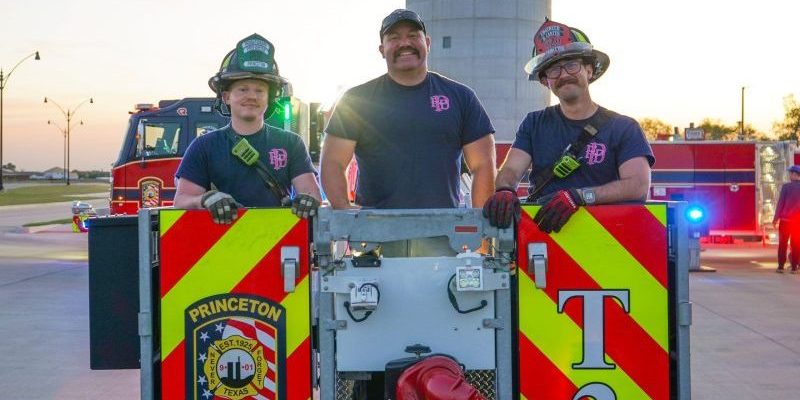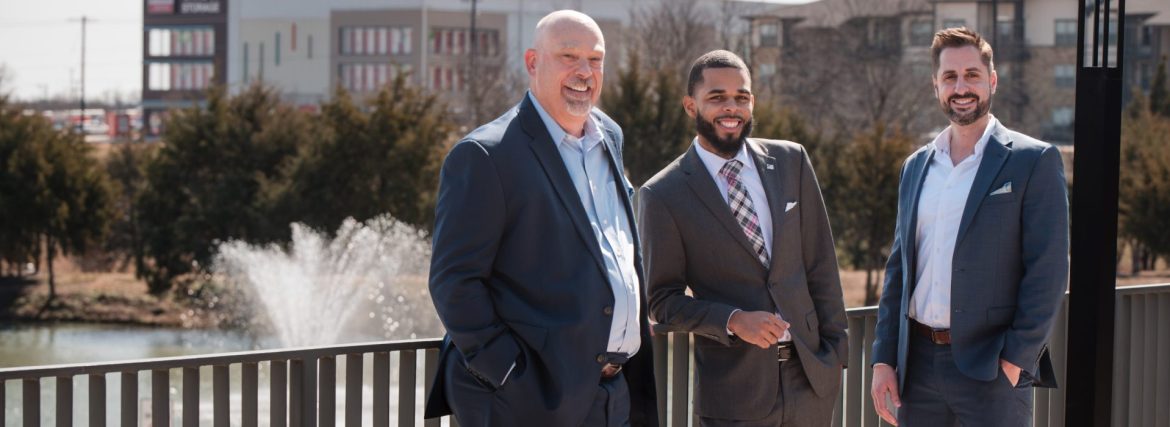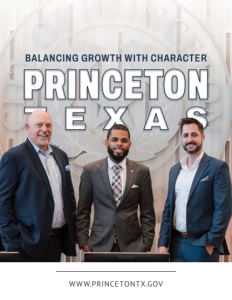Balancing Growth with Character
A Texas city that added 26,000 residents in five years while working to preserve its community roots
Princeton, Texas, is a remarkable example of a city experiencing extraordinary growth while working to preserve its community identity. Located in Collin County—one of the fastest-growing counties in America—Princeton has seen its population surge from 17,027 in 2020 to over 43,000 today, making it the third fastest-growing city in the United States.
“Princeton stands out due to its strategic location, its affordability compared to other parts of Collin County, and its high potential for development.” explains Mayor Eugene Escobar Jr. “We are tackling this new growth that started about two years ago. We have doubled our population in a short period, but we are still focused on maintaining that small-town feel.”
The rapid transformation creates unique challenges for city officials. City Manager Michael Mashburn acknowledges the scale of change: “We have doubled our population in five years, which is significant. We were the third-fastest-growing city in the US last year and still approved more building permits the following year. This acceleration has prompted leadership to take strategic measures to ensure that growth happens thoughtfully.”
This expansion creates both opportunities and obligations. Mayor Escobar Jr. emphasizes that maintaining community connection remains a priority: “The beauty of Princeton is that people here are more involved than in most other cities. I want to ensure we keep that same level of engagement going as we continue to grow, so it doesn’t just become a place to live. It is a place where people can actually come because they’re involved in the growth here.”
Creating a Vibrant City Center
Princeton’s city leadership has identified downtown revitalization as a cornerstone of their development strategy. “Downtown is one of our target areas. We are looking to revitalize in a big way.” Mashburn says. “We have a linear park, our Veterans Memorial Park, and we are exploring some really interesting designs that will be one of a kind and anchor that space. We are also looking to fix the drainage in that area, adding ornamental lighting, landscaping, and facade enhancements.”
The city has implemented practical support for existing businesses while pursuing larger redevelopment projects. Mashburn notes that the city offers a grant program for business owners to improve their properties. Additionally, several properties have been targeted for redevelopment, though specific tenant announcements remain forthcoming.
Jim Wehmeier, CEO of the Economic Development Corporation, emphasizes the vision for the downtown area: “We are envisioning a walkable, family-friendly recreation and commercial area. Having the park centering that area presents us with fun opportunities to play the retail commercial off of family recreation. It’s the original core of the city, so I think it’s crucial to revitalize it.”
When asked about mixed-use developments incorporating housing in the downtown area, Mashburn explains their current priorities: “There are a lot of different uses for the downtown space. Developers always like the multifamily component, and if done appropriately, it could work. However, we have plenty of multi-family in the area. We are more focused on single-family residential and commercial space right now.”
Attracting Business and Building Infrastructure
With residential growth firmly established, Princeton’s economic development strategy aims to diversify the tax base and create local employment opportunities while ensuring sustainable growth in the retail and commercial sectors.
“We are very, very under retail right now. We’re in the process of adding some significant retail, but that doesn’t come without the rooftops either,” explains Wehmeier. “Your traditional economic development, manufacturing research, and headquarter-type commercial retail are areas that we focus on as far as development goes.”
The city leverages several incentive programs to attract and retain businesses. “We have a facade program along 380 and downtown to help people renovate existing buildings. We also have restaurant and small business grant programs,” says Wehmeier. “We do have tax abatements available, and we use Chapter 380 agreements, which can be used in the same manner as a tax abatement. The difference is in the Chapter 380 agreement, you rebate the taxes instead of giving an abatement on the front end.”
Princeton’s location in Collin County provides a significant advantage for workforce development. “Collin County is, I believe, still the fastest growing county in America.” Wehmeier notes. “Your workforce, your labor shed is larger than just our city limits. The county, in general, is very rapidly growing, very highly educated, very diverse, and that’s our workforce as well.”
Managing the Residential Boom
Princeton’s housing market mirrors its rapid population growth, with city officials implementing strategic measures to ensure sustainable development and diverse housing options for current and future residents.

“We have over doubled our population in five years, which is significant.” Mashburn says. “What we are doing is taking a strategic look at the city and thinking who is coming in and who will be here in the future. We are revising our residential building standards right now to ensure that we have a diverse housing stock.”
The city recently implemented a housing moratorium, though EDC-CDC Coordinator DeShawyna Walker clarifies its scope: “We have a housing moratorium, but what developers and companies coming in need to understand is that we have several hundred developments. When they hear the word “moratorium,” it sometimes causes a pause. They get nervous about the workforce, but they need to understand we have several hundred developments with several hundred units.”
This pause allows Princeton to strategically reassess its approach to housing. “It applies to new developments coming in. Those that are fully entitled can continue to proceed, and we’ve got probably four or five years of pre-approved housing,” Wehmeier explains. It won’t slow down our growth; it’s going to give us an opportunity to strategically reassess our building standards and infrastructure.
The focus extends beyond entry-level housing to accommodate residents’ changing needs over time. “We are ensuring that we have not just entry-level housing, but also homes that people graduate into as their income level increases and their family expands,” Mashburn notes. “We should have a wide array of housing stock to ensure that any and all people can live in Princeton and call it home in the future.”
Keeping Residents at the Heart of Growth
Princeton’s leadership emphasizes maintaining strong community connections as the city expands, employing multiple channels to ensure resident voices remain central to development decisions.
“My focus as the mayor is making sure that we listen to what the people are saying,” says Mayor Escobar Jr. “We are focused on what our residents desire for the future of Princeton. Right now, my focus is the people of Princeton, giving them what they want, and communicating that to city leaders.”
The city employs both traditional and innovative approaches to gather community input. “I’m a little younger than most, but I spend more time online. I am very involved in our community groups,” Mayor Escobar Jr. explains. “I am always open to meeting with anyone. They email and call me because they want to be engaged. I was involved in the community long before becoming Mayor.”
This commitment to community engagement extends throughout city administration. “We offer numerous opportunities for stakeholder responses. We try to conduct a monthly survey about any service or aspect.” says Erin Mudie, Director of Marketing and Communications. “We also continuously monitor what the public is saying on social media and out in the community. It has given us several ideas on how to approach communication and things to consider for our services.”
Recent community feedback has helped Princeton identify key resident priorities. “Recently we conducted a survey and got information back about what people want: restaurants, retail, parks and recreation spaces,” Mudie notes. “They express the desire to work here in the Princeton community, not have to go to another city for a job.”

Walker finds this community connection particularly rewarding: “I love being out in our community, talking to our residents and having them excited about businesses that are coming in.” The most rewarding part is looking toward the future and just the narrative of Princeton changing and us growing and being great.”
Meeting the Demands of Expansion
Princeton’s explosive growth necessitates significant infrastructure improvements, with city leadership implementing data-driven approaches to address current needs while planning for future development.
As you can imagine, with the explosive growth, it takes some time for the infrastructure to catch up. That’s why the temporary moratorium on residential buildings was key because it allowed us to take a look at the entire city,” Mashburn explains. “We’re using data to inform our decision. We recently engaged a company that uses AI and infrared to analyze every street and utility line to see what’s going to fail first.”
This analysis enables Princeton to prioritize infrastructure investments strategically. “We developed a non-bond CIP fund for utilities. We’ll invest $49 million in that infrastructure over the next seven years, in addition to $296 million in capital improvements throughout the city, including parks, utilities, and other areas,” says Mashburn. “We currently have $17 million devoted towards road repair as well.”
Mayor Escobar Jr. emphasizes the shift in the city’s approach: “We’re just getting to more of a proactive and not a reactive state. Now, we’re planning for the future, trying to make sure we have the tools needed to catch issues before they become problems. That’s the beauty of the AI that allows us to make a plan before infrastructure fails.”

This proactive stance responds directly to residents’ concerns. “That’s the number one thing that the residents complain about—the infrastructure here,” Mayor Escobar Jr. notes. “We were having water issues at one point in time. That’s been mostly fixed. The roads are the next thing on the list.”
Princeton as a Model City
Princeton’s leadership team has ambitious plans for the city’s future, focusing on creating distinctive community assets while maintaining the small-town connectivity that defines its character.
“We need to create an identity, something that’s sticky, something that reverses the traffic flow in the area, keeps residents here, and makes them want to grow here.” Mashburn says. “One of the things we have done with the parks bond money, which is $109.1 million approved by the voters in November of 2023, was create unique, one-of-a-kind assets that people are going to talk about, not just locally but all over the nation.”
These initiatives include innovative partnerships to develop standout facilities. “We are working with Gensler architects on a cutting-edge multi-generational facility unlike anything you’ve ever seen before,” Mashburn explains. “They brought in two people that are former Disney Imagineers to help ideate the space. We are hoping to have that open and completed within three years.”
Education plays a crucial role in Princeton’s development strategy. “The staff has really focused on the relationship with our school district and educational system to a much higher level,” Wehmeier notes. When it comes to economic development, education is possibly the single most important thing.
Mayor Escobar Jr. frames his vision for Princeton around community involvement and civic engagement: “My focus is on ensuring that the city and its residents are intertwined, where residents truly feel like they have a say in the direction of their city. We are going to bridge that gap because, for a long time, many residents have not necessarily understood what the city actually does.”
He aspires for Princeton to become a model for other municipalities: “I really want Princeton to be a roadmap, where people ask questions about resident engagement and participation and our strategies for managing the extreme growth that we were experiencing. I want Princeton to be on the map as an example for smaller cities and towns to come to us and learn about how they can grow the way Princeton has grown.”
AT A GLANCE
Who: City of Princeton
What: A fast-growing municipality balancing residential expansion with downtown revitalization and community-focused planning initiatives
Where: Collin County, Texas
Website: www.princetontx.gov
PREFERRED VENDORS/PARTNERS

Founded in 1946, PGAL is an international design firm specializing in architecture, engineering, interiors, and planning for a diverse portfolio of public and private sector clients. Renowned for outstanding client service and attention to detail, we balance innovative, responsive design solutions with a pragmatic, cost-conscious approach. This client-centered philosophy has earned PGAL repeat business and lasting relationships for decades.
PGAL Architecture: www.pgal.com



